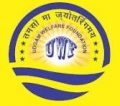Services
Basic Computer Learning Skills Certification Course
A completely free certification course designed for all learners, with a special focus on children from economically and socially marginalized backgrounds who are often denied opportunities others take for granted.
About This Course
This free certification course provides fundamental computer skills training through video lessons, study materials, and chapter tests. Upon passing all tests, you'll receive a certificate to showcase your new skills!
How It Works
- Study each module through videos and reading materials
- Take the practice test for each module
- Pass the final comprehensive test
- Download your free certificate
Course Modules
Introduction to Computers
- What is a computer?
- Types of computers
- Basic computer components (CPU, RAM, Monitor, Keyboard, Mouse)
- Operating systems (Windows overview)
- Starting and shutting down a computer
MS Word (Word Processing)
- Opening and saving documents
- Formatting text (fonts, sizes, colors)
- Paragraph alignment and line spacing
- Bullet points and numbered lists
- Inserting tables and images
- Page layout, margins, and printing
MS Excel (Spreadsheets)
- Introduction to spreadsheets
- Rows, columns, and cells
- Basic formulas and functions (SUM, AVERAGE)
- Formatting cells (borders, fonts, alignment)
- Sorting and filtering data
- Creating simple charts (bar, line, pie)
MS PowerPoint (Presentations)
- Creating a new presentation
- Adding and editing slides
- Inserting text, images, and shapes
- Slide transitions and animations
- Tips for effective presentations
Using the Internet
- What is the internet?
- Browsers (Chrome, Firefox)
- Searching information using Google
- Creating and using email (Gmail)
- Downloading and uploading files
- Internet safety and responsible use
Final Online Test and Certification
- Guidelines for the online test
- Passing criteria and retakes
- Receiving your certificate
- After completing all tests, write mail to sachin@udgamwelfarefoundation.com to get your digital certificate.
Detailed Course Content
Module 1: Introduction to Computers
What is a computer?
A computer is an electronic device that can store, retrieve, and process data to perform a variety of tasks. It can perform calculations, send emails, create documents, and access the internet. For example, students use computers to write assignments in MS Word, watch educational videos on YouTube, or attend online classes.
Types of computers
There are various types of computers based on size and use. These include desktop computers (used in homes and offices), laptops (portable computers), tablets (touchscreen-based), and smartphones (mini handheld computers). For instance, in a classroom, a teacher might use a laptop to present a PowerPoint lecture.
Basic computer components
Key components of a computer include:
- CPU (Central Processing Unit) – It is the brain of the computer that processes all data and instructions.
- RAM (Random Access Memory) – Temporary memory that stores data being currently used.
- Monitor – Displays output in visual form.
- Keyboard – Used to type text and commands.
- Mouse – Used to point, click, and interact with the computer.
For example, when you write an email, you use the keyboard to type, mouse to click send, and the CPU processes it.
Operating systems (Windows overview)
An operating system is software that manages hardware and allows you to run applications. The most common one is Microsoft Windows. It has a user-friendly interface with icons, a start menu, and taskbar. For example, to open MS Paint in Windows, you click the start button, type "Paint," and press Enter.
Starting and shutting down a computer
To start a computer, press the power button. After booting, Windows will load, and you can log in. To shut down, click on the Start menu, select the power icon, and choose "Shut down." Always shut down properly to avoid damage or data loss. For instance, never turn off the power directly while working on a document.
Module 2: MS Word (Word Processing)
Opening and Saving Documents
Opening a document in MS Word is the first step in working on a file. To open an existing document, you can click on "File" → "Open" and select the document from your folder. For saving a new file, use "File" → "Save As", choose a location and file name, and click "Save". You can also use shortcut keys like Ctrl + S to save quickly. For example, if a student is typing their English essay, they should frequently press Ctrl + S to avoid losing data due to power cuts or sudden system shutdowns.
Formatting Text (Fonts, Sizes, Colors)
Formatting allows you to make text look attractive and readable. You can change the font style from the Home tab, like using Arial, Times New Roman, etc. Font size can be increased or decreased to highlight headings (e.g., Title in 16 pt and body in 12 pt). Colors can be used for highlighting important terms — for instance, in a science report, headings can be in blue and subheadings in green. Example: While making a project report on "The Solar System", students can make the title bold, size 20, and color dark blue to make it stand out.
About Your Certificate
Earn Your Certification
Upon successfully completing all module tests and the final exam, you'll receive a free digital certificate from Udgam Welfare Foundation recognizing your achievement in Basic Computer Skills. This certificate can be downloaded, printed, and shared with schools or potential employers.
Requirements:
- Complete all module tests with passing scores
- Pass the final comprehensive exam
- No cost - completely free!
- After completing all tests, write mail to sachin@udgamwelfarefoundation.com to get your digital certificate.
Why Us ?
We are pioneer in education sector in India. Our past results shows the credibility and our seriousness towards any project we handle.
- Experience: We have highly experienced team in each sector
- Reputation: With the help of our results during past , we have developed good reputation.
- Commitment : We are highly committed team of professionals.
